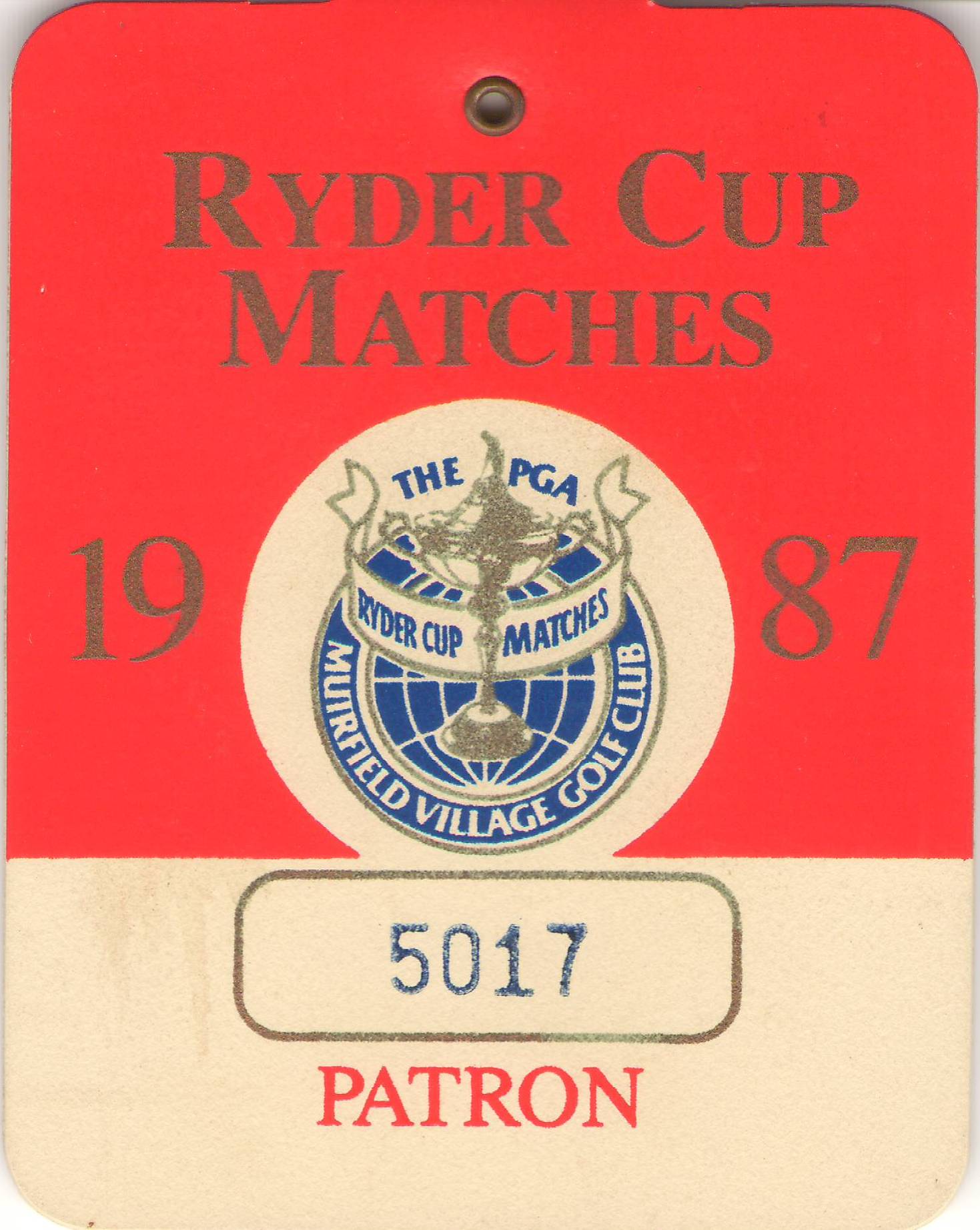25 Years Ago, Ryder Cup Came of Age
It was 25 years ago, almost to the day, that I got the call. It was my friend Jack Fraser, who called on me at the time from his job at First Boston. Jack and I had played a little golf over the years, and he knew I was a big fan.
Jack said, “Tom, I have two passes to the Ryder Cup Matches this Sunday at Muirfield Village Golf Club in Columbus. It’s the final day. You interested?”

For those not familiar with the nuances of the Ryder Cup, a quick refresher course is in order.
Unlike most golf tournaments, the Ryder Cup is a team game, not an individual contest. Each team has twelve members.
Also unlike most modern golf tournaments, the format is match play, not stroke play. In a stroke play event, the player’s total strokes over the course of the tournament determines how he fares. In match play, each hole is contested and a point is awarded to the winner of that hole. So if your opponent makes a three on the hole, it doesn’t matter whether you have a four or a nine, you still lose the hole and he gets one point and only one point. When one player leads his opponent by more holes than there are holes left to play, he is declared the winner and his team gets one point. If two players tie after 18 holes, each team is awarded half a point.
But the Ryder Cup isn’t just contested over three days with singles matches. Two of the three different types of games played in the Ryder Cup are two-man team games. In foursomes, played in the mornings on the first two days of the Ryder Cup, two players from each side play a match where each team plays one ball, alternating shots between the two teammates. The better score of the two teams wins the hole in match play format.
In the afternoons of the first two days, two players from each side play a game called fourball, where each player plays the hole and the better score of the US team is compared to the better score of the European team, with the low score winning the hole in match play format.
There are 28 matches in the Ryder Cup; 8 foursomes, 8 fourballs and 12 singles. To win the Cup, a team must win 14 ½ points. For the defending champion to retain the Cup, they need only win 14 points.
The first Ryder Cup Matches were held in 1927 at Worcester County Club in Worcester, MA. The competition was originally between the US and Great Britain, but after a sustained period of US dominance, and at the request of none other than Jack Nicklaus, representation of the British team was extended to continental Europe.
1987, a it turns out, was the year that turned the Ryder Cup from an interesting event that the US dominated into one of the world’s top sporting events. The Europeans won in 1985 at The Belfry in England, dominating the US 16 ½ to 11 ½. It was the first victory ever for the European side (since the British team became the European team in 1979), and first loss for the US since England prevailed in 1957.
So in 1987, the US was out to defend their honor, and also to defend their homeland, as the British/European team had never won on US soil.
Through the first two days, things did not work out as planned for the US squad. Riding a rare 4 point sweep of the afternoon fourball matches on Friday, the European side held a seemingly commanding 10 ½ to 5 ½ lead Saturday night heading into the Sunday singles matches. But the US squad was not going to go away easy.
As my Dad and I entered the grounds at Muirfield Village Golf Club on a beautiful, sun-drenched fall morning 25 years ago, one thing was certain. There was a tension in the air that I had not felt at other golf tournaments I had attended. Something was different. And you could tell it was truly an international event as the chatter from the fans around you came in many different languages.
There was a term at that time called a “Nicklaus Roar,” which was the explosion from a far corner of the course when Jack sank a big birdie putt, particularly on Sundays. It could be heard all around the course and rattled the nerves of his competitors. Even though Jack was the non-playing captain of the US team that day and never swung a club, “Nicklaus Roars” cascaded from every corner of the course as the US team sank their putts to win their holes. Fans of both teams, in contrast to the measured politeness at a typical golf tournament, unabashedly cheered for their team’s successes and their opponents’ missteps, not unlike a European soccer match or a US football game.
The US staged a furious comeback, winning five of the first seven matches and halving one other, to cut the European’s seemingly insurmountable lead to 12-11. But the Europeans won two of the last five matches on the final hole, halved two others, and won for the first time on US soil 15-13.
The 1987 Ryder Cup, with the Europeans winning back-to-back cups, and winning in the US for the first time, upped the ante and turned it into one of the world’s greatest sporting events. And I was lucky to a part of it.








